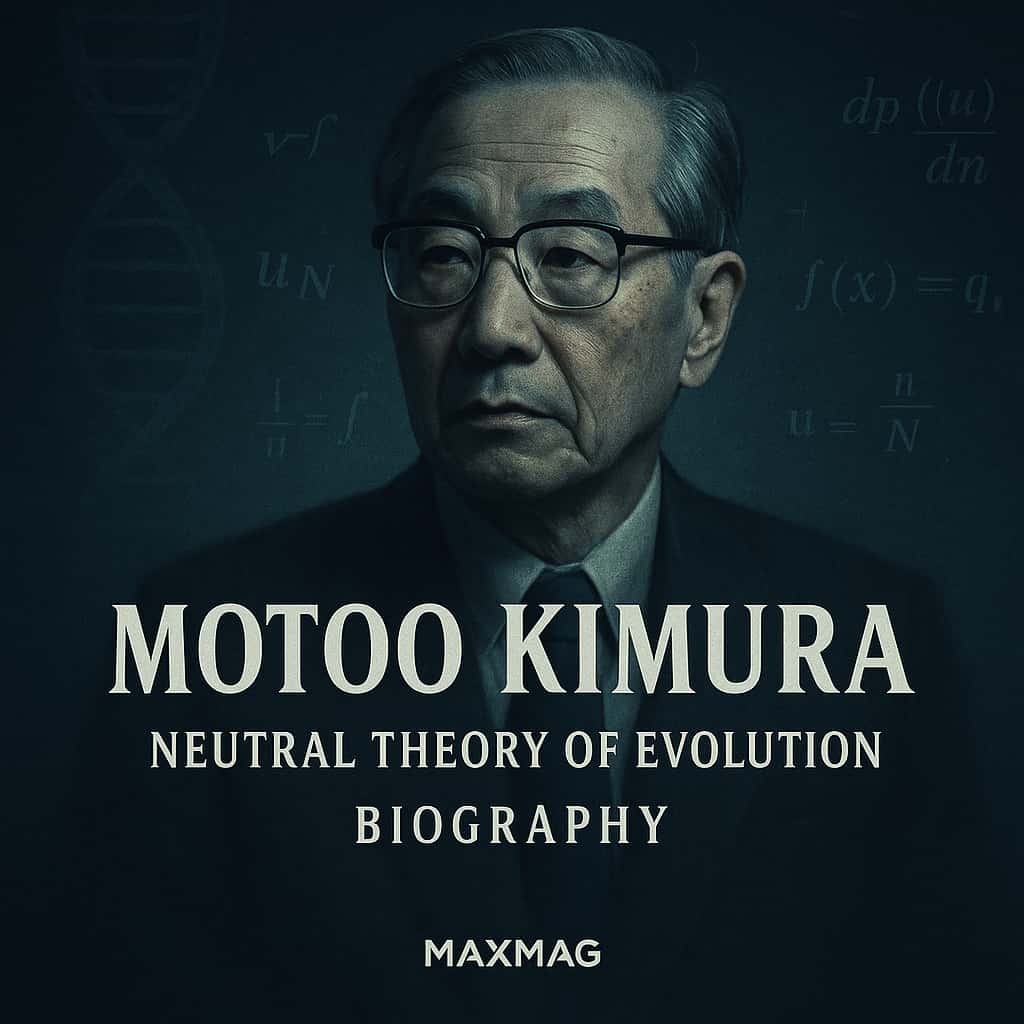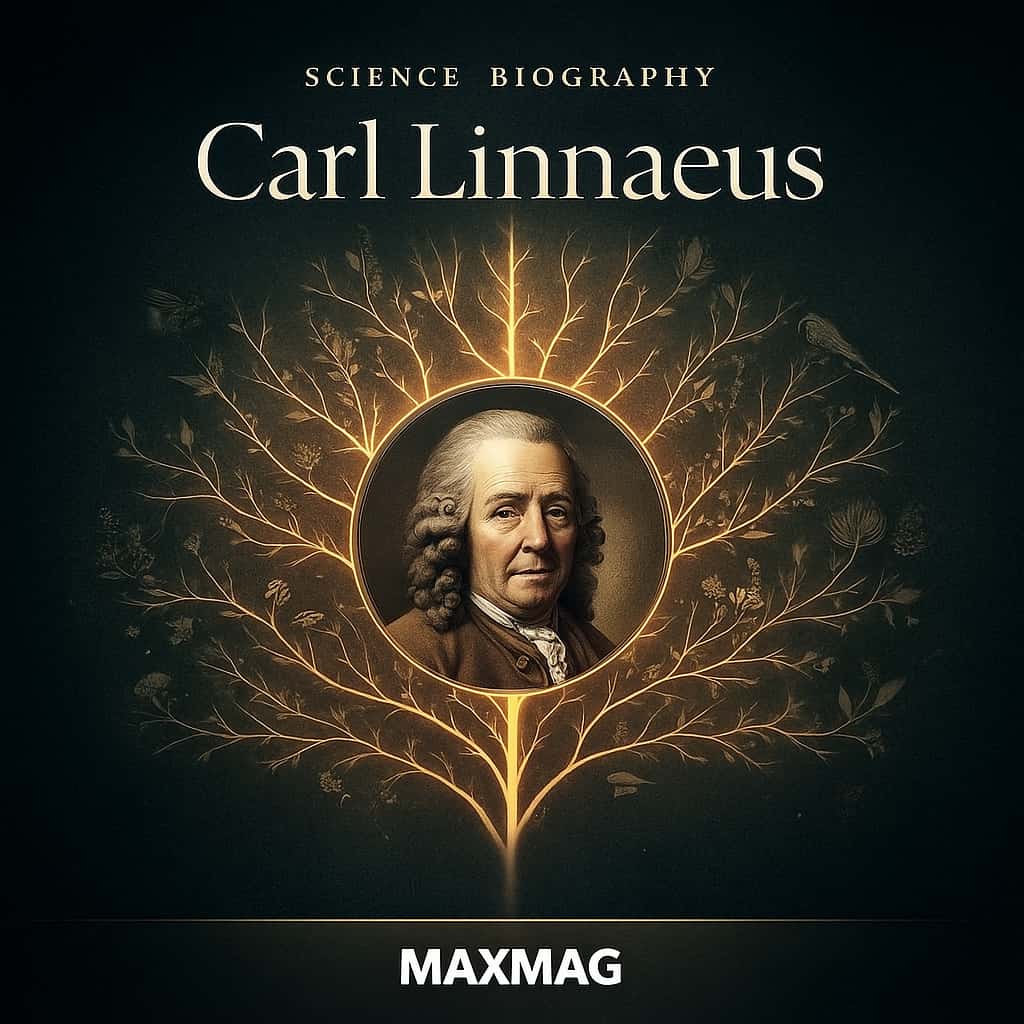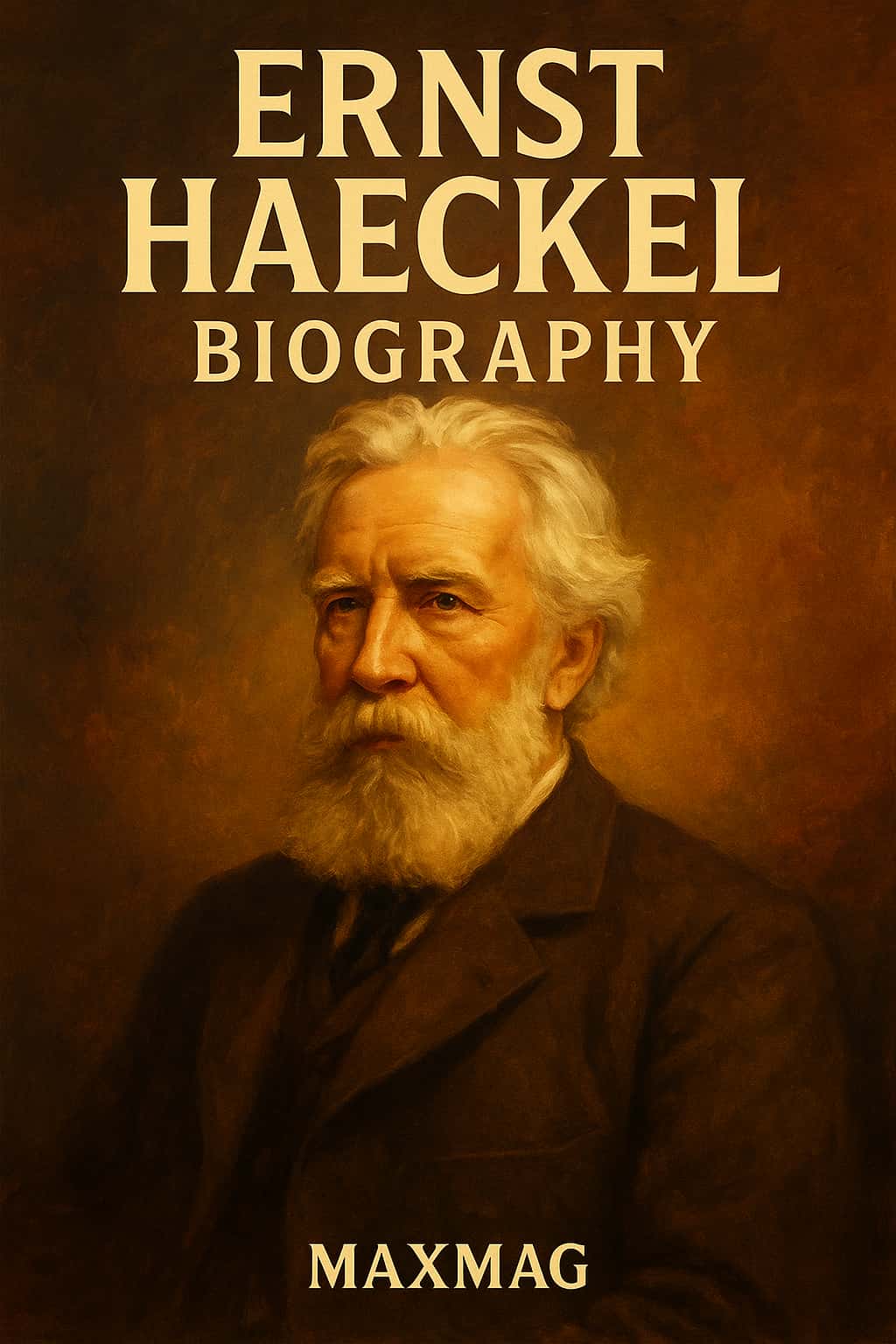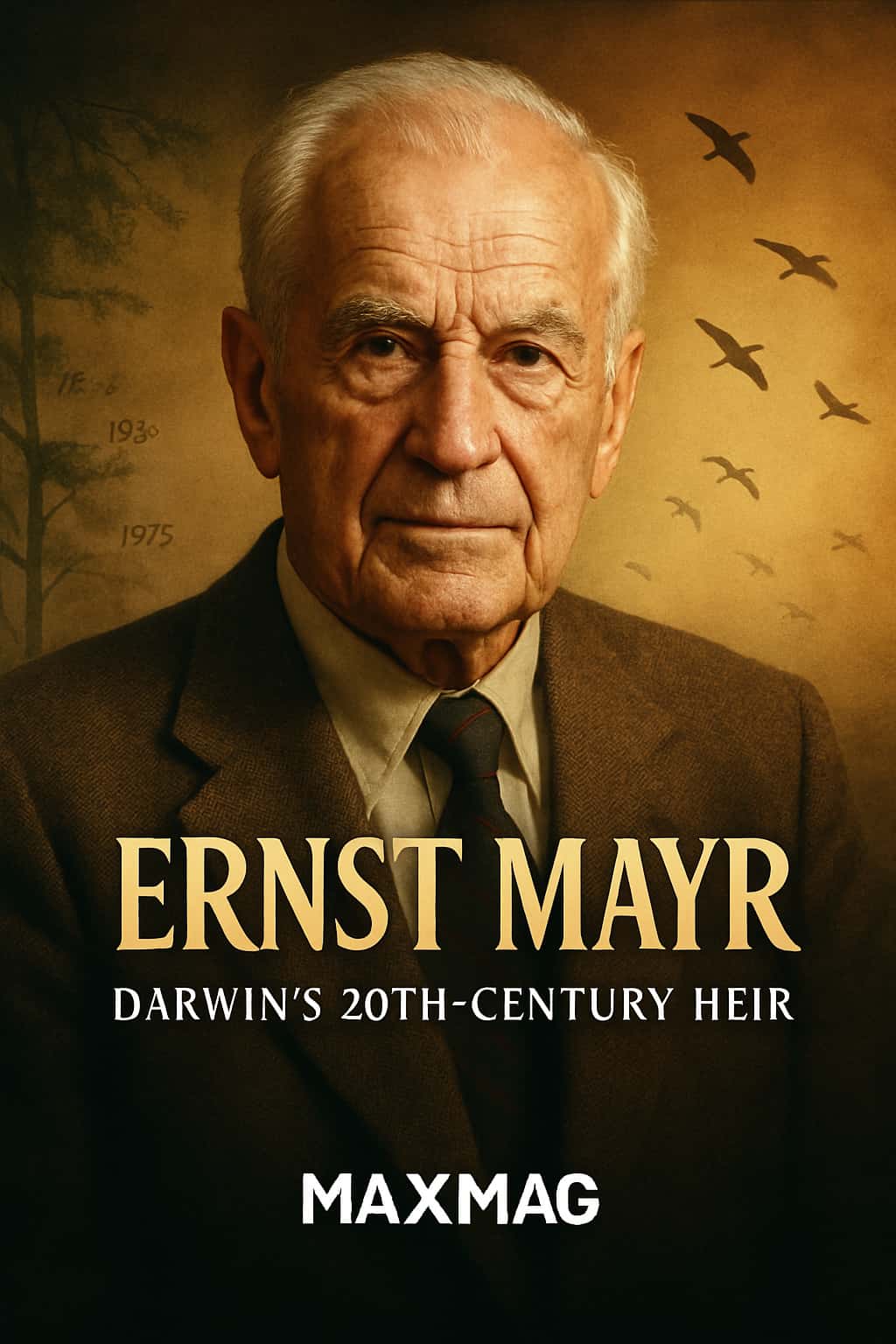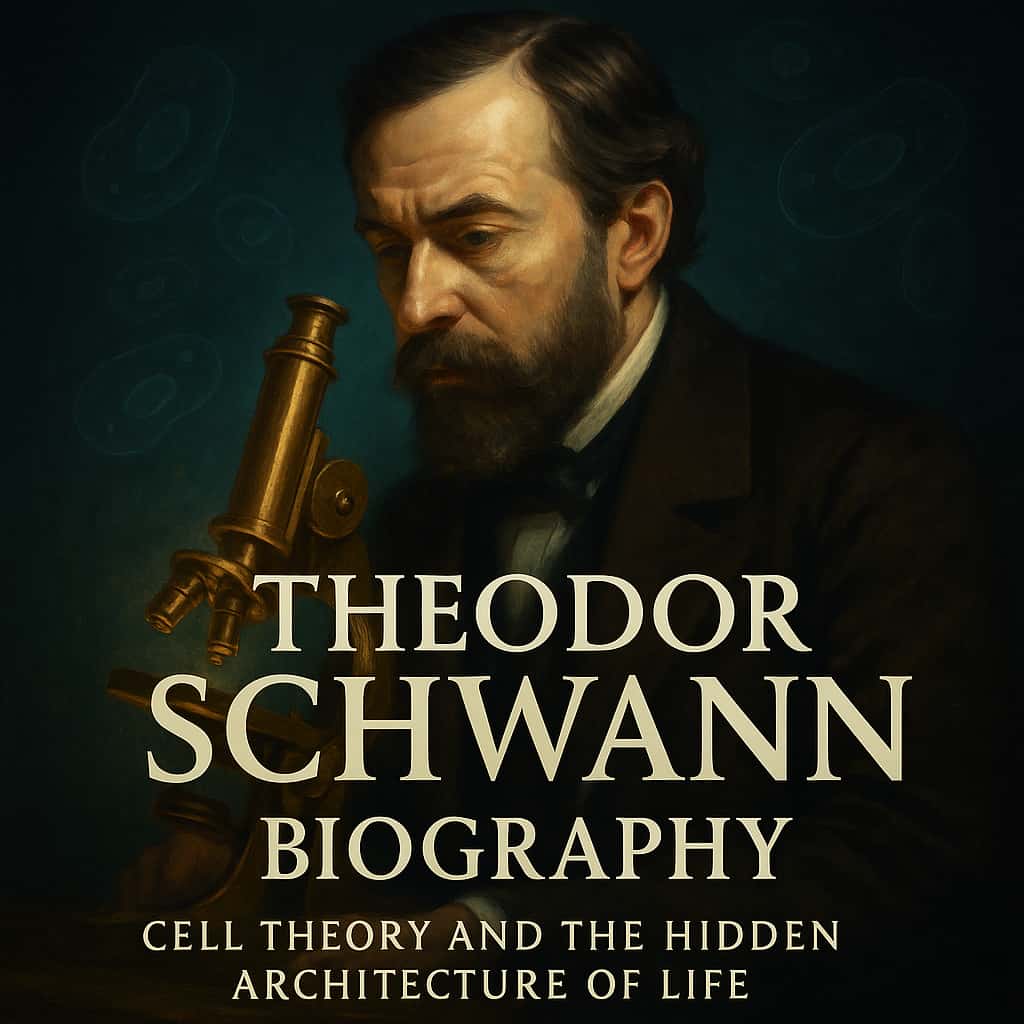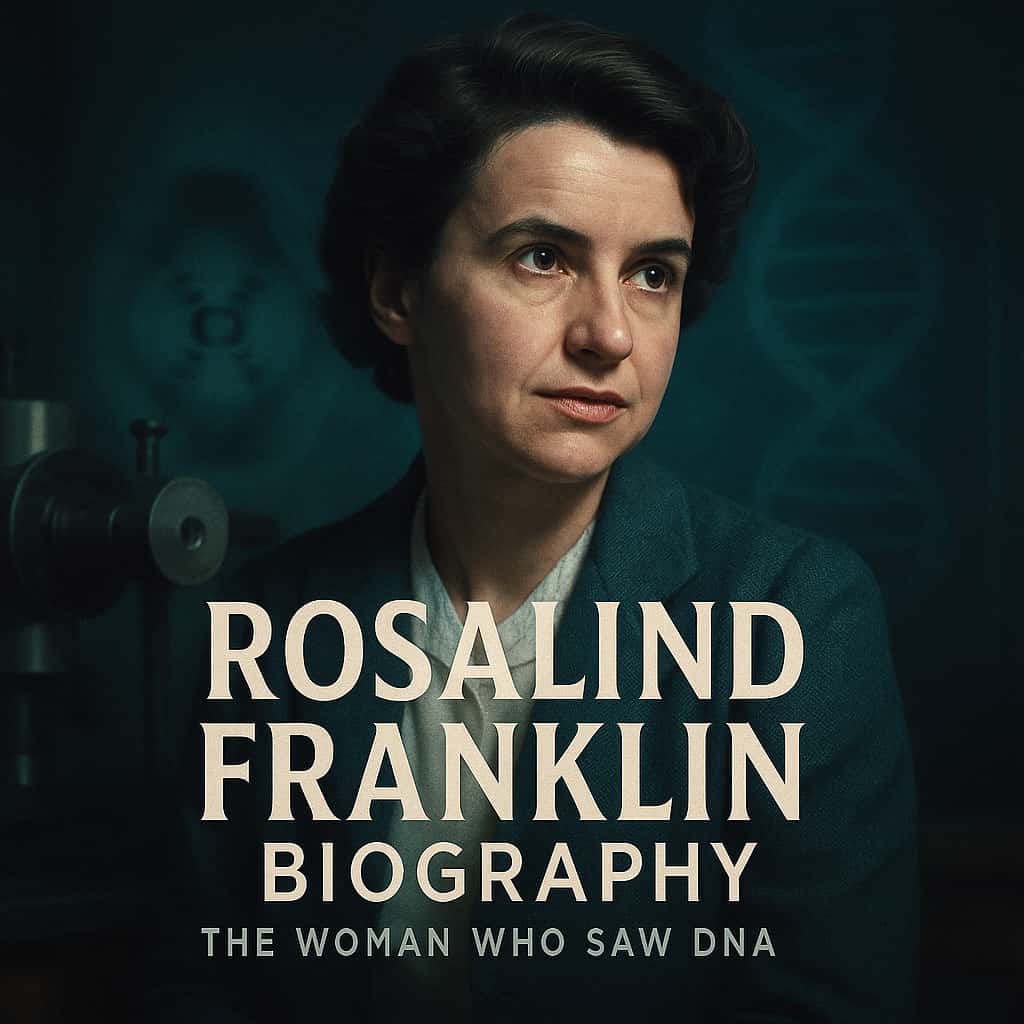
In most tellings of 20th-century science, the headlines belong to the stars: Darwin’s intellectual heirs, the fossil hunters, the charismatic lab showmen. Yet one of the most important stories hides in equations scribbled by a shy American geneticist from the Midwest. This Sewall Wright biography is, at its heart, the story of a man who preferred guinea pigs and algebra to grand pronouncements, but whose ideas still shape how biologists think about evolution, heredity and chance.
To follow a careful Sewall Wright biography today is to trace the birth of population genetics as a discipline: the merging of Mendel’s laws of inheritance with Darwin’s theory of natural selection, all expressed in the language of probability. Wright’s work turned vague debates about “fit” organisms into a quantitative science of gene frequencies, random drift and fitness landscapes, laying much of the mathematical foundation for the modern synthesis in evolutionary biology.
At a glance: Sewall Wright
- Who: Sewall Wright, American geneticist and population genetics pioneer.
- Field and era: Evolutionary biology and genetics, early to late 20th-century science.
- Headline contributions: Founder of population genetics, shifting balance theory, inbreeding coefficients, F-statistics, path analysis.
- Why he matters today: His models of genetic drift, population structure and causal graphs still underpin modern science, from evolutionary theory to statistics and machine learning.
Early Life and Education of Sewall Wright
A mathematically minded child in small-town America
Sewall Green Wright was born in Melrose, Massachusetts, in December 1889, the eldest of three gifted brothers. His father, Philip Green Wright, was a teacher, printer and poet; his mother, Elizabeth Quincy Sewall Wright, came from a family with deep New England roots. When Sewall was still a toddler, the family moved to Galesburg, Illinois, where his father taught at Lombard College, a small Universalist institution that would quietly shape the future of evolutionary biology.
In Galesburg, books and arguments were part of the furniture. The young Wright worked the hand press on which his father and brother helped print early poems by a then-unknown student, Carl Sandburg. Family lore also captured a boy who filled homemade notebooks with observations on animals and anatomy, long before anyone suspected that these obsessions would one day feed into a landmark Sewall Wright biography in the history of genetics.
College choices and the pull of biology
Wright entered Lombard College in 1906 intending to study mathematics, the discipline in which his quick grasp and quiet determination were most obvious. But a key figure diverted his path: Wilhelmine Key, one of the first American women to earn a PhD in biology, who taught genetics and emboldened students to treat heredity as something that could be measured and analysed, not just described. Under her influence, Wright’s interests migrated steadily from pure mathematics to the mathematics of life.
After graduating, he moved to the University of Illinois for a master’s degree, and then to Harvard’s Bussey Institute for his doctorate, where he worked under the mammalian geneticist William Ernest Castle on the inheritance of coat colours in mammals. The mix of breeding experiments and quantitative analysis that characterised these early years would become a recurring motif in any serious Sewall Wright biography: a scientist equally at home with animals in cages and symbols on paper.
Sewall Wright biography and the Birth of His Big Ideas
Guinea pigs, livestock and the problem of inbreeding
The next phase of Wright’s career unfolded far from the ivy-covered quadrangles of elite universities. From 1915 to 1925, he worked at the U.S. Bureau of Animal Husbandry, asked to tackle decidedly practical questions: how did inbreeding affect the health and productivity of livestock? Could breeders push traits like growth or meat quality without driving animals into genetic dead ends?
Wright’s approach was obsessive and statistical. He oversaw experiments on tens of thousands of guinea pigs, tracing how traits changed under different mating systems and levels of relatedness. Out of this work came the concept of the inbreeding coefficient – a number that captured how likely it was that two copies of a gene in an individual were identical by descent. It sounds abstract, but in the context of the Sewall Wright biography it was revolutionary: a way to turn a vague notion of “too much inbreeding” into something breeders could actually calculate.
From animal breeding to population genetics pioneer
By the early 1920s, Wright realised that his equations did not just apply to herds and laboratory colonies. They described how genes behave in any population – human, animal or plant – when mating is structured, populations are finite, and chance events skew who leaves offspring. That insight nudged him from applied animal breeding into the emerging field of population genetics.
In 1931, in a paper titled “Evolution in Mendelian populations”, Wright laid out a framework that connected Mendelian inheritance, natural selection and random genetic drift in a single mathematical picture. Alongside contemporaries Ronald Fisher and J. B. S. Haldane, he became one of the architects of the modern evolutionary synthesis, the fusion of genetics and Darwinian theory that still underpins evolutionary biology.

Key Works and Major Contributions of Sewall Wright
Fitness landscapes and the shifting balance theory
Ask evolutionary biologists what they picture when they think of Sewall Wright, and many will describe a landscape: rolling hills and valleys representing the “fitness” of different gene combinations, with populations wandering across the terrain. This metaphor of fitness landscapes was more than just a visual aid; it was central to Wright’s shifting balance theory, which argued that evolution is propelled by an interplay between natural selection, random drift and limited migration among subpopulations.
In the shifting balance theory, small, partially isolated groups – demes – can drift off a local peak of adaptation, cross a valley of lower fitness, and climb a higher peak that would be inaccessible to a large, well-mixed population under selection alone. If that small group finds a superior genetic combination, gene flow can spread those advantageous variants to other demes. For anyone reading a detailed Sewall Wright biography, this theory often forms the conceptual centrepiece: an attempt to explain how evolution could produce major innovations without defying Darwinian logic.
Genetic drift, F-statistics and the architecture of variation
Wright’s other great legacy is his systematic treatment of genetic drift – the random fluctuations in gene frequencies that occur because populations are finite. He developed formulas for effective population size, which captures the number of individuals who actually contribute genes to the next generation, and for F-statistics, which quantify how genetic diversity is partitioned within and between populations.
These tools allowed biologists to ask questions that would have been unthinkable in Darwin’s day: How inbred is a particular subpopulation? How sharply differentiated are island populations from mainland ones? Are observed patterns of genetic variation better explained by selection, drift or a mixture of both? In that sense, any modern Sewall Wright biography doubles as a history of the technical language conservation biology and human population genetics still use to make sense of DNA data.
Path analysis and causal graphs
Remarkably, Wright’s influence did not stop at evolutionary biology. In a 1921 paper on “Correlation and causation”, he introduced path analysis, a way of representing chains of cause and effect using diagrams and regression equations. Today, these “path diagrams” look strikingly like the causal graphs used in fields as diverse as economics, epidemiology and artificial intelligence.
Wright’s original motivation was biological – to disentangle the direct and indirect effects of traits and environmental factors on outcomes in breeding experiments. But the mathematics was general, and decades later statisticians and philosophers of science rediscovered and extended his ideas. When data scientists today talk about identifying causal effects, they are, whether they know it or not, walking through territory first mapped in the Sewall Wright biography of the early 20th-century statistician-geneticist.
Methods, Collaborations and Working Style in the Sewall Wright biography
A solitary thinker in collegial institutions
In 1926 Wright joined the University of Chicago, where he would remain until 1955, before moving to the University of Wisconsin–Madison for the final academic chapter of his career. He taught, supervised students and participated in seminars, but colleagues often described him as fundamentally solitary in his working habits. He would retreat to his office or home study, filling pages with tightly written derivations, returning periodically to present finished results to a small circle of peers.
This style did not mean isolation from the wider community. Wright exchanged long, sometimes combative letters with other evolutionary theorists, including Fisher and Theodosius Dobzhansky, debating everything from the importance of drift to the structure of selection in natural populations. For a population genetics pioneer, the correspondence served as an informal peer-review system, and those exchanges now form a rich archival layer for historians reconstructing the Sewall Wright biography from the inside.
Guinea pigs, blackboards and a quiet humour
Students who passed through Wright’s courses recall not just the equations, but small, human moments. One famous anecdote – which Wright himself later downplayed – has him absent-mindedly using a wriggling guinea pig as a blackboard eraser during a lecture, only realising when the animal squealed. Whether literally true or embroidered over time, the story captures a genuine feature of the Sewall Wright biography: a man so immersed in his models and experimental animals that the boundary between the two occasionally blurred.
He could be shy in large gatherings, but in small seminars Wright showed a dry wit and an insistence on clarity. Colleagues remember him stopping a discussion to insist that a term be defined or a verbal argument translated into equations. It was not pedantry for its own sake; it reflected his conviction that biology, to be a mature science, had to face up to the constraints and affordances of mathematics.

Controversies, Criticism and Misconceptions
Debating the shifting balance theory
No serious Sewall Wright biography can avoid the long-running controversy over his shifting balance theory. Even in his lifetime, and increasingly after his death, evolutionary biologists questioned whether the finely tuned conditions the theory requires – many small demes, just the right amount of migration, delicate interactions between selection and drift – occur often enough in nature to matter.
Some critics argued that selection and recombination in large populations could, under realistic conditions, achieve much of what Wright imagined drift-driven demes doing. Others saw the theory less as a literal description and more as a suggestive picture of how multiple evolutionary forces might interact over long timescales. Even today, papers and reviews still appear revisiting “Wright versus Fisher”, making the shifting balance debate a small but persistent subplot in evolutionary biology history.
Misreadings of a cautious thinker
Another source of confusion lies in how Wright’s writings are read. His prose was dense, sometimes meandering, and he shifted between formal equations and philosophical speculation. Later readers cherry-picked sentences to claim that he believed drift was more important than selection in general, or that he thought evolution was almost entirely a random walk. In context, though, he emphasised the interplay of forces – mutation, selection, drift, migration – rather than elevating one as universally dominant.
In that sense, the controversy around his ideas often tells us as much about the agendas of his interpreters as it does about the man himself. A nuanced Sewall Wright biography has to navigate between caricatures: neither depicting him as an infallible prophet nor dismissing him as a clever but ultimately misguided theoretician.
Impact on Population Genetics and on Wider Society
Foundations of conservation and human genetics
Wright never saw his work as confined to abstract theory. His models of genetic drift and inbreeding found applications in conservation biology, where researchers try to understand how small, isolated populations – from island birds to endangered mammals – lose genetic diversity and accumulate harmful mutations. Concepts like effective population size and F-statistics are now routine tools for those managing fragmented habitats and planning genetic rescue efforts.
In human genetics, his framework helped clarify how population structure, migration and historical bottlenecks shape the distribution of genetic variation between groups. It provided a quantitative language for discussing questions that could otherwise slide into stereotype or speculation, helping to keep debates anchored in measurable parameters rather than vague racial categories.
From evolutionary theory to data science
Wright’s influence also stretches into fields he never could have imagined. His coefficient of determination and early work on correlation and causation anticipate concepts that now sit at the heart of regression analysis and model fitting in statistics and machine learning.
Modern textbooks rarely mention his name when introducing the R² statistic or causal diagrams, but historians of statistics have pointed out how central he was to these developments. For readers coming to the Sewall Wright biography from outside biology, this bridge to contemporary data science can be startling: the same mind that drew evolutionary landscapes also drew some of the first causal graphs.
Personal Beliefs, Character and Private Life
Family, marriage and a life of routines
In 1921 Wright married Louise Lane Williams; they had three children and, by all accounts, a steady domestic life. While his brothers ventured into aeronautical engineering and political science, Sewall’s world revolved around the rhythms of teaching, research and long walks. He was known locally as an avid walker, striding through Madison’s winters into old age, sometimes mentally debugging equations as he went.
Visitors described a modest household, more cluttered with books and manuscripts than with trophies. Wright did not court public attention, and when prizes came – the National Medal of Science, the Darwin Medal, the Balzan Prize – he accepted them with the same understated manner that runs through every thoughtful Sewall Wright biography.
Unorthodox philosophy in a scientific mind
One surprising thread in Wright’s life was his interest in philosophy, particularly panpsychism – the idea that some form of mind-like property is a pervasive feature of the universe, not something that appears suddenly in complex brains. Through his long friendship with philosopher Charles Hartshorne, Wright tried to think about genetic systems and evolution in a broader metaphysical framework, seeing organisms as part of an unfolding, creative process.
These ideas never dominated his technical work, but they coloured his reflections on chance, order and creativity in nature. They also make the Sewall Wright biography unusual among scientific lives: a story in which a fiercely quantitative mind wrestled openly with questions of meaning and consciousness.

Later Years and Final Chapter of Sewall Wright
From Chicago to Wisconsin and beyond
After nearly three decades at the University of Chicago, Wright retired in 1955 and moved to the University of Wisconsin–Madison, where he continued to teach and write for another five years. “Retirement” in his case was a flexible concept; he kept publishing papers well into his nineties, tinkering with models and responding to critics of the shifting balance theory.
Even as molecular biology and DNA sequencing began to transform genetics, Wright remained convinced that population-level thinking – the sort that had driven his entire career – would remain essential. In his four-volume magnum opus, Evolution and the Genetics of Populations, he tried to synthesise decades of work into a comprehensive account of how genes, populations and evolutionary forces interact.
Accident, obituary and the long view
In 1988, at the age of 98, Wright slipped on ice near his Madison apartment, sustaining injuries from which he did not recover. He died shortly afterwards, closing a scientific career that had begun in the era of hand-written pedigrees and ended in the age of computers. A contemporaneous New York Times obituary describing him as the man who “formed the mathematical basis for evolution” captured how central his work had become to the way 20th-century science thought about life.
For those who now piece together a Sewall Wright biography from papers, letters and memories, the circumstances of his death are a poignant reminder of how ordinary events can bookend extraordinary lives.
The Lasting Legacy of a Life in Science: the Sewall Wright biography
Modern reassessments and continuing influence
Since Wright’s death, historians and biologists have continued to reassess his place in 20th-century science. Some emphasise his technical brilliance and the elegance of his models; others stress the limits of the shifting balance theory and the ways in which later data have constrained its scope. Detailed historical work, including a biographical memoir from the US National Academy of Sciences, situates him alongside Fisher and Haldane as one of a small handful of thinkers who turned evolution into a fully quantitative theory.
Yet the continuing debates may be the best testimony to his importance. The concepts Wright introduced – genetic drift, effective population size, fitness landscapes, F-statistics – are now routine in fields ranging from conservation genetics to genomics. His diagrams of evolutionary peaks and valleys still appear in lectures, inspiring new models and new arguments. Any Sewall Wright biography written today is therefore not just a story about one scientist, but a window onto the evolving conversation about how life changes over time.
Why the Sewall Wright biography matters now
In an era of genomic data sets and powerful computers, it is easy to forget how recent the very idea of “population genetics” is. Wright’s work reminds us that behind every elegant formula lies a set of choices about what to count, what to ignore, and how to picture the messiness of real populations. His life shows how a patient, mathematically minded researcher can quietly revolutionise a field without ever becoming a household name.
That is why the Sewall Wright biography still resonates in modern science and culture. Understanding how he framed questions of chance, structure and adaptation helps us see current debates – about genetic diversity, conservation, even the interpretation of big data – in a deeper light. His story illuminates not just the history of evolution, but the broader challenge of using mathematics to make sense of a living, changing world.
Frequently Asked Questions about Sewall Wright biography
Q1: Who was Sewall Wright and why is he important in evolutionary biology?
Q2: What is the shifting balance theory associated with the Sewall Wright biography?
Q3: How did Sewall Wright’s ideas differ from those of Ronald Fisher?
Q4: What practical impact did Sewall Wright’s work have beyond theory?
Q5: Did Sewall Wright contribute to fields outside genetics?
Q6: Why does the Sewall Wright biography still attract attention today?

